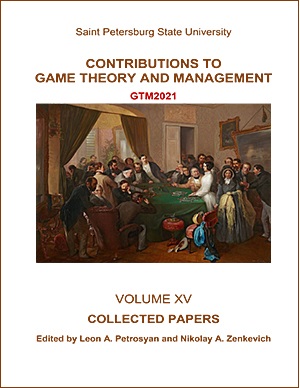Game Theoretic Approach to Multi-Agent Transportation Problems on Network
DOI:
https://doi.org/10.21638/11701/spbu31.2022.01Abstract
In this paper, we consider a network game where players are multi-agent systems (we call them in this paper "coalitions") under the condition that the trajectories of players (coalitions) should (have no common arcs, or have no common vertices) i. e. must not intersect. In the same time the trajectories of players inside coalition can intersect (have common arcs,or have common vertices). The last condition complicates the problem, since the sets of strategies turn out to be mutually dependent. A family of Nash equilibrium is constructed and it is also shown that the minimum total time (cost) of players is achieved in a strategy profile that is a Nash equilibrium. A cooperative approach to solving the problem is proposed. Also, another cooperative mini maximal approach to solving the problem is investigated. We also consider the proportional solution and the Shapley value to allocate total minimal costs between players. Two approaches for constructing the characteristic function have been developed.
Keywords:
Nash equilibrium, the Shapley value, the proportional solution
Downloads
References
Downloads
Published
How to Cite
Issue
Section
License
Articles of "Contributions to Game Theory and Management" are open access distributed under the terms of the License Agreement with Saint Petersburg State University, which permits to the authors unrestricted distribution and self-archiving free of charge.




